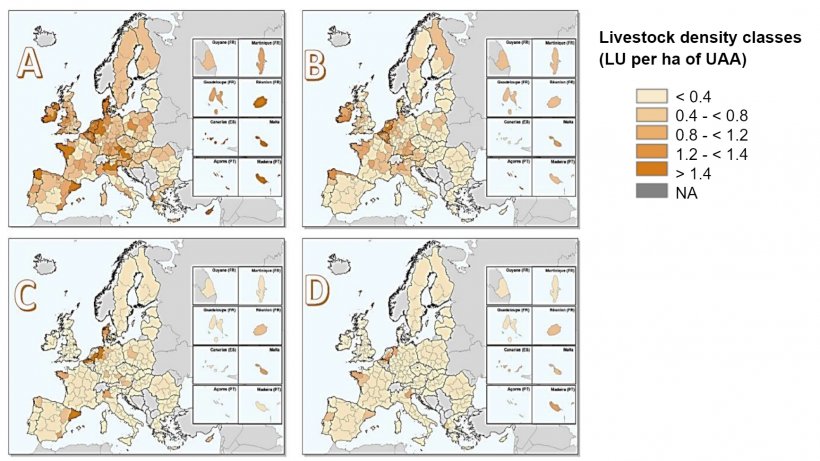The study outlines the importance of the livestock sector and the challenges it faces in terms of sustainability and environmental impact. In 2017, the value of livestock production and livestock products in the EU-28 was equal to 170 billion euros, representing 40% of the total agricultural turnover. The EU-28 produced 47 million tonnes of meat in 2017, comprised of pig meat (50%), poultry meat (31%), beef (17%), and sheep and goat meat (2%). Pork is the animal protein of choice in European diets, with an annual per capita consumption of 31.3 kg.
Environmental challenges

In 2017, the EU-28 agricultural sector generated 10% of the region's total GHG emissions, which is less than industry (38 %) or transport (21%). Almost half of the agricultural emissions arising within the EU come from enteric fermentation (mainly from ruminants) and the management of manures (all livestock). Once emissions related to the production, transport and processing of feed are included, the livestock sector is responsible for 81-86% of the agricultural GHG emissions.
EU-28 agricultural GHG emissions decreased by 24% between 1990 and 2013, driven by reductions in cattle numbers and improvements in productivity. Further reductions in emissions may be achieved via measures such as increased use of legumes, smarter use of manure, improved herd management, improved livestock health and changes to feeding practices.
Looking to the future
The report calls for the reduction of negative impacts of livestock farming on environment and biodiversity. The European Union will probably not be able to meet its commitments made at COP 21 and achieving carbon neutrality in 2050 is very ambitious. Agriculture and in particular livestock are partly responsible for this as they represent an important source of greenhouse gas.
Reconnecting livestock and crop production offer tremendous opportunities to develop more efficient agri-food systems, to eliminate losses by recycling biomass between sectors, to reduce GHG emissions and contribute to removing CO2 from atmosphere, to regain the quality of ecosystems while ensuring resource security and adaptation to climate.
Pathways to improved livestock sustainability
Broadly speaking, the sustainability of livestock could be improved in three ways: (a) through efficiency gains, (b) substitution of high impact inputs with lower impact alternatives, and (c) via more fundamental redesign of agricultural systems involving shifts from linear approaches to circular approaches. In pig, broilers and eggs systems, the rate of genetic improvement of feed conversion rate might be lower in the future than in the past because of biological limits and animal welfare issues. Reducing piglet mortality and developing precision feeding will contribute to efficiency.
The number of piglets produced by sows has increased from 16.4 to 20.6 per year between 1970 and 2016 and the feed conversion ratio of pigs has decreased from 3.80 to 2.37 in the same period. The slower than predicted improvement in FCR represents a rebound effect – improved genetics have reduced FCR at a given weight but this has also led to increases in weights at slaughter, offsetting the reductions in FCR. The rate of improvement in pig FCR might be lower in the future than in the past because practical barriers (such as the limitations of the production environment) and consumer preferences (e.g. to transgenic manipulation) and animal welfare issues may constrain future improvements in pig performance. However precision feeding could reduce nutrient excretion by around 20% for growing animals.
October 14, 2020/ European Commission/ European Union.
https://ec.europa.eu/





